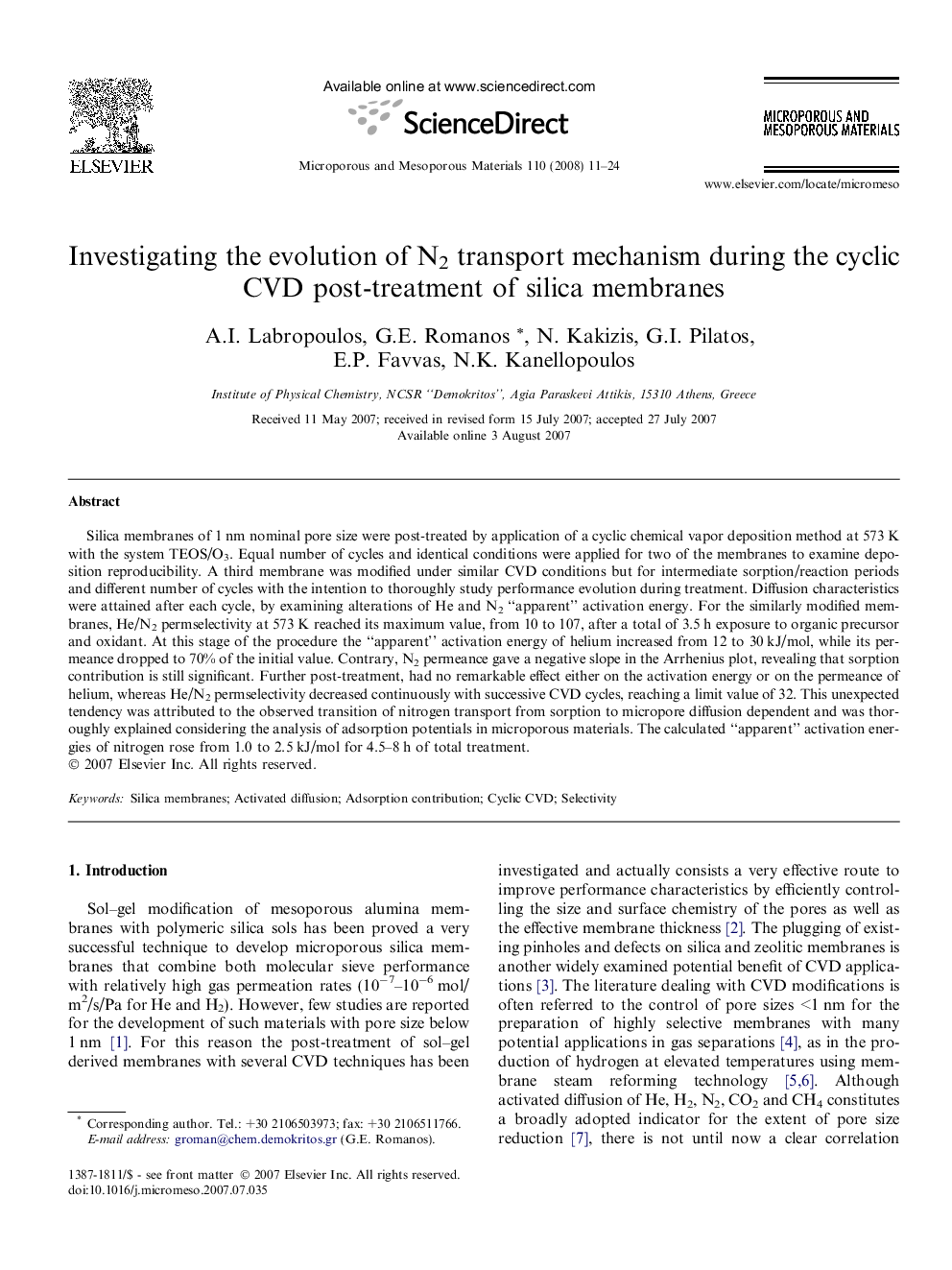| Article ID | Journal | Published Year | Pages | File Type |
|---|---|---|---|---|
| 76305 | Microporous and Mesoporous Materials | 2008 | 14 Pages |
Silica membranes of 1 nm nominal pore size were post-treated by application of a cyclic chemical vapor deposition method at 573 K with the system TEOS/O3. Equal number of cycles and identical conditions were applied for two of the membranes to examine deposition reproducibility. A third membrane was modified under similar CVD conditions but for intermediate sorption/reaction periods and different number of cycles with the intention to thoroughly study performance evolution during treatment. Diffusion characteristics were attained after each cycle, by examining alterations of He and N2 “apparent” activation energy. For the similarly modified membranes, He/N2 permselectivity at 573 K reached its maximum value, from 10 to 107, after a total of 3.5 h exposure to organic precursor and oxidant. At this stage of the procedure the “apparent” activation energy of helium increased from 12 to 30 kJ/mol, while its permeance dropped to 70% of the initial value. Contrary, N2 permeance gave a negative slope in the Arrhenius plot, revealing that sorption contribution is still significant. Further post-treatment, had no remarkable effect either on the activation energy or on the permeance of helium, whereas He/N2 permselectivity decreased continuously with successive CVD cycles, reaching a limit value of 32. This unexpected tendency was attributed to the observed transition of nitrogen transport from sorption to micropore diffusion dependent and was thoroughly explained considering the analysis of adsorption potentials in microporous materials. The calculated “apparent” activation energies of nitrogen rose from 1.0 to 2.5 kJ/mol for 4.5–8 h of total treatment.
